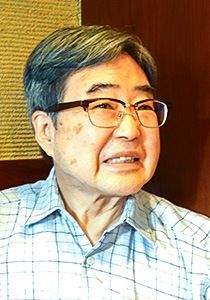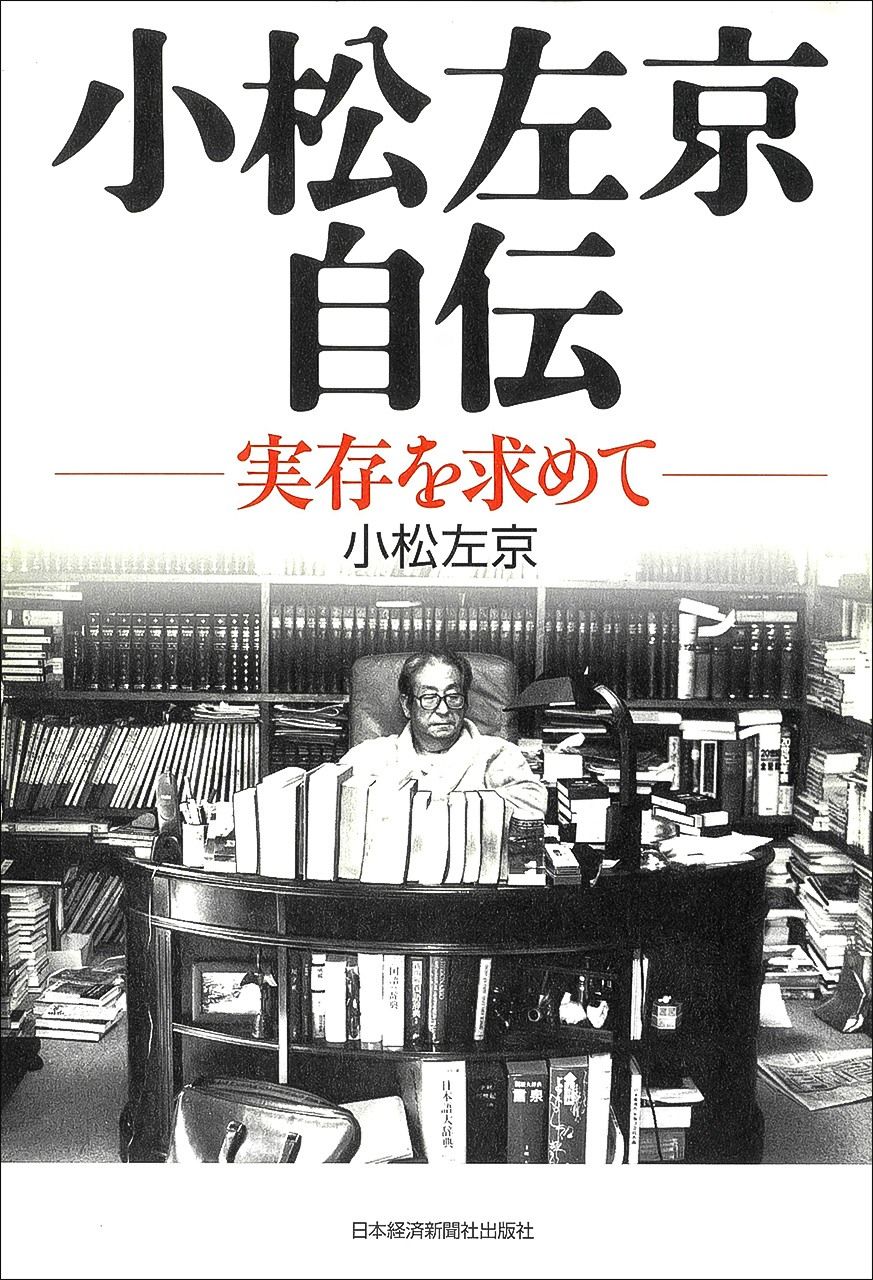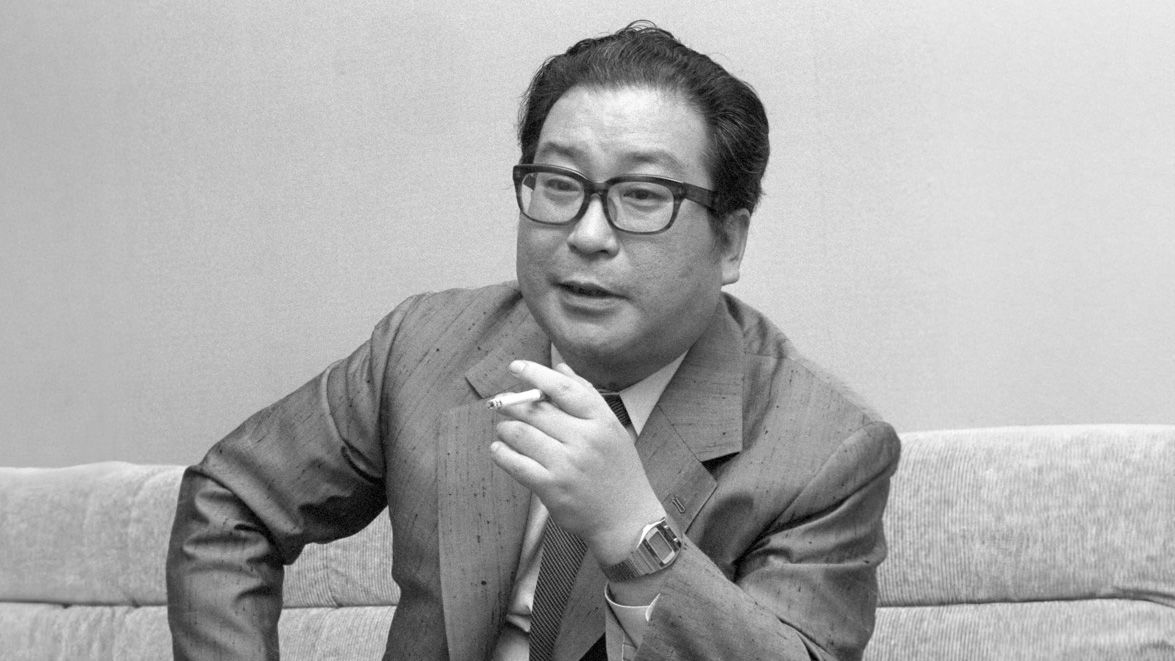
Fifty Years of “Japan Sinks”: The Bestselling Disaster Novel that Defined an Era
Books Science Society- English
- 日本語
- 简体字
- 繁體字
- Français
- Español
- العربية
- Русский
A Classic of Japanese Disaster Fiction
“I wasn’t involved with the project from the initial planning stages. When I took over as editor on what became Japan Sinks, Komatsu had already been working on the book for four or five years. In fact, I was already his third editor and several years had passed since Nihon Apacchi-zoku [The Japanese Apache] came out from Kappa Novels.” Now 85, Hamai Takeshi still remembers clearly the years he spent as Komatsu Sakyō’s editor, working with the author on his classic disaster novel, Nihon chinbotsu (trans. by Michael Gallagher as Japan Sinks).
The first fiction to appear under the pen name Komatsu Sakyō came out in 1961, and the author followed this with a series of science fiction stories. In 1964, he published his first full-length novel, The Japanese Apache with Kōbunsha, as well as Fukkatsu no hi (trans. by Daniel Huddleston as Virus: The Day of Resurrection), published by Hayakawa Shobō. His books became bestsellers, and he became known as one of the big three writers of Japanese science fiction alongside Hoshi Shin’ichi and Tsutsui Yasutaka.
Japan Sinks came out in two volumes under the Kappa Novels imprint in 1973. The novel was a major work, weighing in at more than 1,300 manuscript pages. What does Hamai remember about preparing this for publication?
“When I came onboard, the manuscript was about 200 pages long. I remember that the first pages were already starting to yellow with age. When I saw that, I realized what a long project I was getting involved in. He used to write with a fountain pen, in a somewhat rounded, curly script. But it was always easy to read. It was my responsibility to guide the manuscript through to completion. It was slow work! He never seemed to get any closer to finishing the story . . . It went on and on . . .”
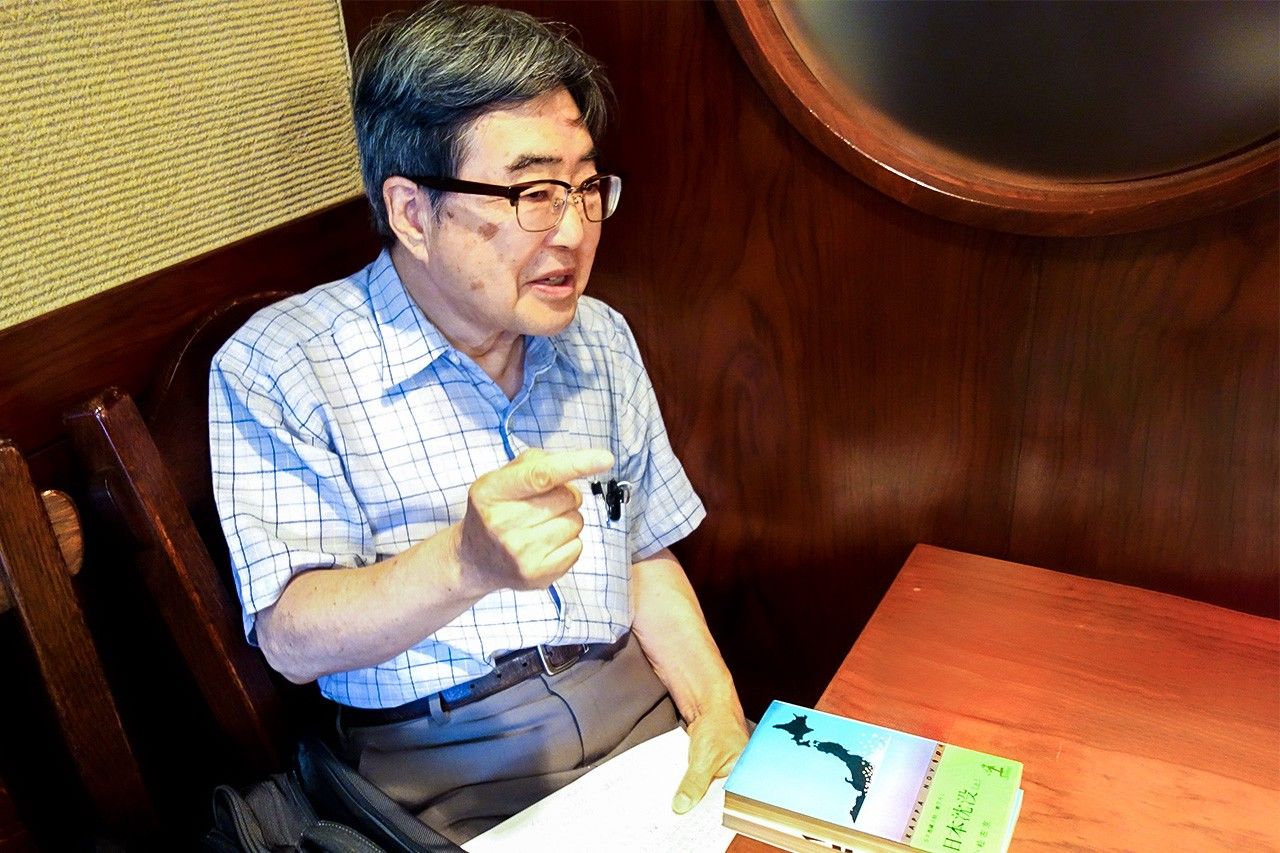
“The original title was Japan Destroyed,” says Hamai Takeshi, the book’s editor. On the table in front of him are the two volumes of Japan Sinks in the Kappa Novels edition, published by Kōbunsha.
Surprisingly, Hamai says when he first saw the manuscript, the work-in-progress still did not bear the title under which it would later become famous.
“At that stage, the title was going to be Nihon metsubō (Japan Destroyed). I’d heard from my predecessor that the book was a disaster story about the Japanese archipelago sinking into the ocean, and somehow the idea got fixed in my head that the title was going to be Japan Sinks. In those days, he used to send pages of the manuscript over by mail as he wrote: normally ten pages or so at a time. And he would write on the outside of the envelope: “Japan Destroyed Manuscript Enclosed.” I would photocopy the pages—without a copy, he wouldn’t be able to write what came next. I took possession of the original manuscript on behalf of the publisher and sent him back the photocopies. And I always wrote on the envelope: Japan Sinks Manuscript Enclosed. I had totally convinced myself that that was the title.”
Four Million Copies and Counting
“When the book eventually came out, that was the title. But I didn’t push it on him or insist on the change. The decision was only taken with his approval.”
The writing process took nine full years from start to finish.
“As you know, the novel deals with some difficult technical subjects. So that’s one reason why it took so long: he spent a lot of time reading up on the science and consulting experts. One person he talked to a lot was Takeuchi Hitoshi, a professor of geophysics at the University of Tokyo. Another reason was that he was always busy with so many projects. He was involved in planning for the Osaka Expo (held in 1970), for example, and all these projects meant he never had enough time to concentrate on the writing.
“Another factor was not the fault of the author, but the publisher. Around the time of the protests and controversy over the US Security Treaty in 1970, Kōbunsha was embroiled in a huge battle between management and labor—one of the biggest labor disputes in Japanese industrial history. The union split down the middle, and things in the company were a bit chaotic for a while. I suppose as a result I wasn’t able to press the author to submit his manuscript in quite the way I would normally have done.”
When the novel finally did appear, it became a national phenomenon—perhaps not surprisingly, given its sensational plot. For those who haven’t read Japan Sinks, or seen either of the two film adaptations, the basic story is this.
An uninhabited island in the Ogasawara chain sinks overnight. The novel’s hero, Onodera, is captain of a deep-sea submarine, and together with a maverick geophysicist, Professor Tadokoro, he sets out to explore the depths of the Japan Trench to find out what is happening.
Before long, the Japanese archipelago is rocked by a series of colossal earthquakes and volcanic eruptions. The government orders Tadokoro to carry out an emergency survey of the abyssal zone, but it’s too late. A major earthquake devastates much of Tokyo—and as if that wasn’t bad enough, Mount Fuji erupts as well. It becomes clear that the entire island chain is sinking into the sea, and that nothing can be done to avert the destruction of the entire country. The government opens secret negotiations with Australia and other countries about evacuating the Japanese population before it is too late . . .
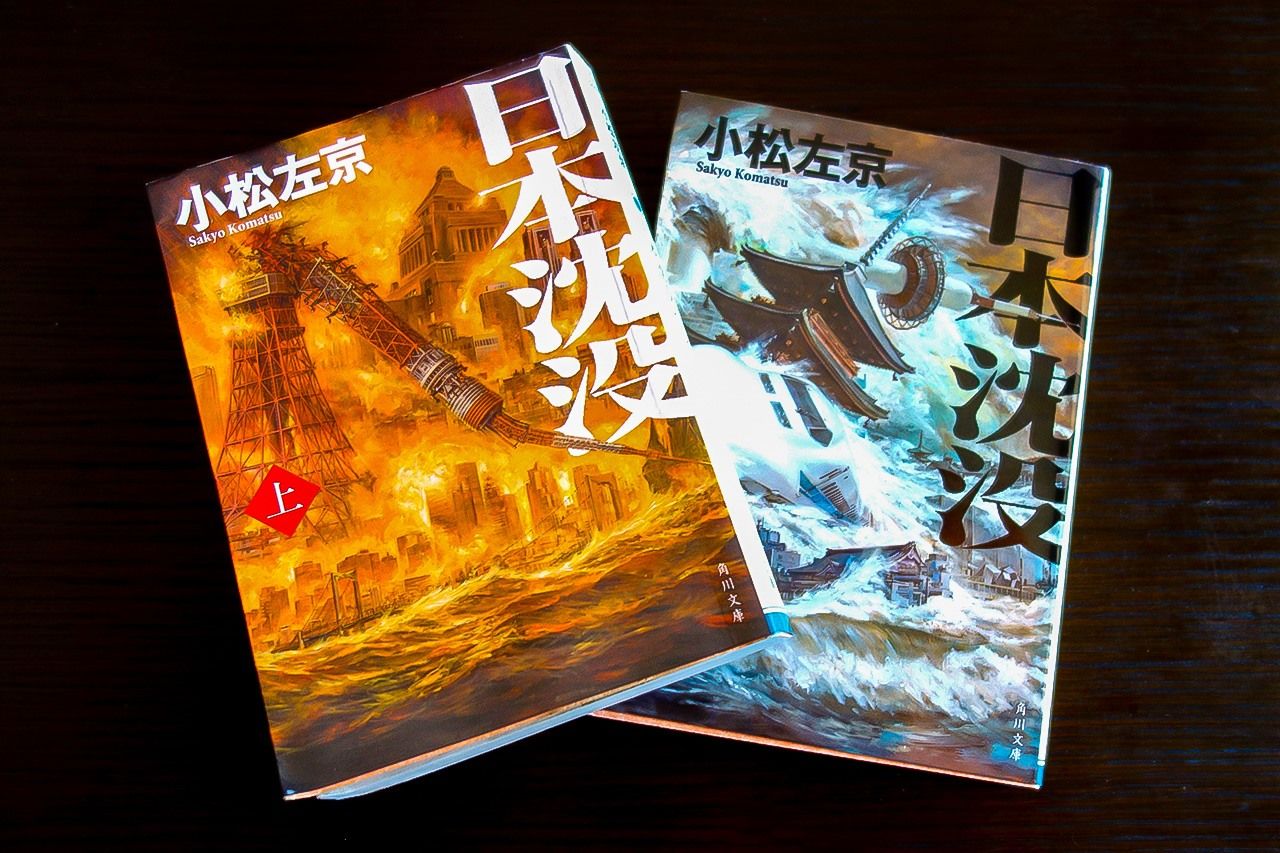
The Kadokawa paperback edition of Japan Sinks.
The novel was built on the author’s painstaking research into the latest geophysical science of the time, and the twists and turns of the plot are given added realism by the cutting-edge science and accurate information about continental drift theory, plate tectonics, and mantle convection. This scaffolding of solid facts lends the extraordinary plot a frightening sense of plausibility.
“When I read the manuscript, I knew it was a gripping story. But Kappa Novels specialized in mystery writers like Matsumoto Seichō. Science fiction was very much a sideline, and I wasn’t sure how well the book would sell. Especially since it had to be published in two volumes. The sales department weren’t happy about that at all. They told me: ‘Even Matsumoto Seichō’s books don’t sell well in two volumes.’ It’s hard to believe it now, but I did try to suggest once that we might try to put the book out in a shorter form. ‘Couldn’t we squeeze it into one volume?’ I said. He was furious. ‘How dare you? I’ve been working for ten years to finish this!’’
“In those days the normal practice at Kappa Novels was to do an initial print run of 30,000, and then print extra copies as necessary. For Japan Sinks, we started with 60,000 copies for two volumes. I had my doubts about how well the book was going to sell, but I needn’t have worried. As soon as we sent the promotional ads to the distributors, the response was extraordinary. Advance orders started flooding in. Immediately after publication, we placed big eye-catching ads across half a page in all the major newspapers. The book was an instant bestseller, and eventually sold more than 4 million copies.”
What explains the novel’s extraordinary success? “Well, I think the title captures the imagination. Japan Sinks. You can almost hear the glugging sound as the country slips beneath the waves. I think the original title, Japan Destroyed, would have given a different impression. A bit too heavy, maybe. So that’s perhaps one reason why the novel did so well. One day, the sales department had a phone call from an older woman in a working-class area of Tokyo, saying she’d heard about this Japan Sinks book and wanted to know where she could get her hands on a copy. They just told her, “Try your nearest bookstore.” But that’s how big the impact of the novel was: it was reaching people who never normally bought books. That’s what it takes for a book to become a super bestseller like that. We were printing 50 to 100 thousand copies every week at one point.
“I remember when the combined sales for both volumes reached 3.98 million copies. The author started asking us to stop printing any more copies. He said anything he made after that would only go on taxes anyway!” (The highest rate of income tax at the time was 75%.)
The Uncompleted Sequel
Despite its length, the novel was not finished. Even after a decade, the author was still not ready to let go of his story. At the end of the second volume, after the story has apparently come to an end, the last words on the final page are: “End of Part One.” Did Komatsu really have plans for a sequel?
“I remember we talked about that. I thought that Japan Sinks was complete and satisfying as it was. But he insisted: Let me call this Part One. And so, in the author’s introduction to the Kappa Novels edition it says, ‘I want readers to think of this as the first part of a longer fictional story.’ He wanted to write a sequel about what happens to the Japanese people after they are scattered around the world. He was going to call it Nihon hyōryū (Japan Adrift). I didn’t realize at the time, but it later emerged from his papers that he had actually started to sketch out ideas for this second part of the story. I felt a bit remorseful when I learned about that—maybe I ought to have done more to encourage him to write the sequel.”
For Komatsu, Japan Sinks was an unfinished magnum opus. In the summer after the initial publication, Komatsu and his editor went on a trip around Australia. “It was partly a gift from the publisher, a kind of bonus after the book became a bestseller—but he also wanted to do research for the sequel.”
Komatsu later went on another study trip with a team led by geophysicist Takeuchi Hitoshi to visit Iceland, one of the most volcanically active countries in the world.
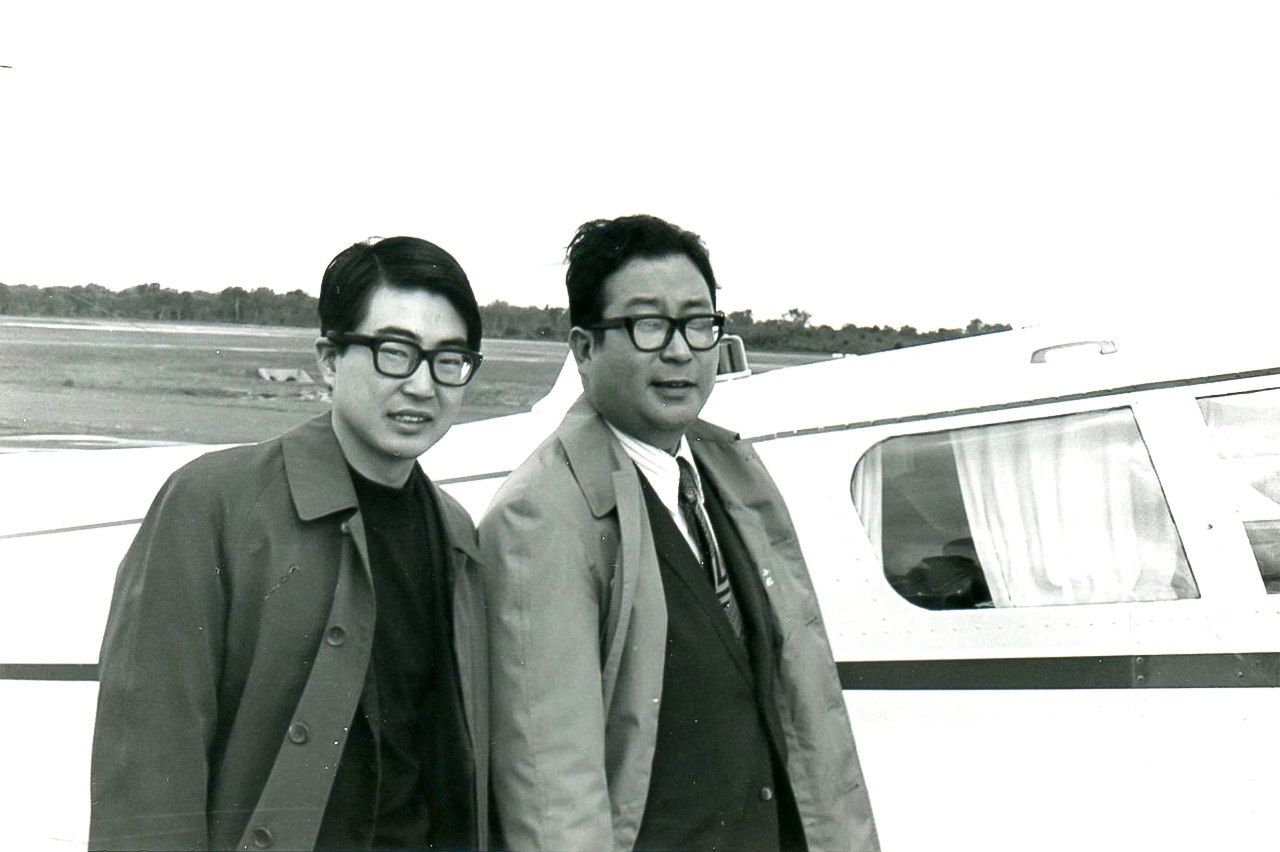
Komatsu Sakyō (right) with his editor, Hamai Takeshi. The two men chartered a plane and flew around Australia on a research trip for the intended sequel. (Courtesy Hamai Takeshi)
In fact, Komatsu did publish a version of Japan Sinks Part II, co-written with the author Tani Kōshū when Japan Sinks was made into a film for the second time in 2006. But Hamai says this was probably something different from his original plans for Japan Adrift. “He was getting on a bit by then and I don’t think he had the energy anymore for the huge project he’d originally envisaged.”
“What Does it Mean to Be Japanese?”
What were Komatsu Sakyō’s intentions in writing Japan Sinks? Hamai has his ideas.
“Around the time the book was published, a Japanese writer called Yamamoto Shichihei came out with a book called Nihonjin to Yudaya-jin [trans. by Richard L. Gage as The Japanese and the Jews], published under the pseudo-Jewish penname of Isaiah Ben-Dasan. Despite the ersatz Jewish trappings, it was really a book about Japanese identity and what it means to be Japanese. Anyway, the book was a huge bestseller. In Japan Sinks, Komatsu imagines a situation in which the Japanese people lose their homeland and are scattered around the world, a bit like the Jewish diaspora. I think that was one of the questions the book was interested in: Would the Japanese survive with their identity intact in a situation like that, as the Jewish people have done? How would the Japanese cope as a scattered people in exile if they lost their homeland? I think he wanted to explore that idea. After Japan Sinks, there was going to be Japan Adrift, and together they would make up Japan Destroyed. I think that was the idea.”
What about Komatsu himself? The author left an account of at least part of his motivation in writing the book.
“My initial motivation when I started to write the book was the war . . . I felt that the Japanese had become intoxicated as a result of rapid economic growth; infatuated with the idea of getting rich. During the war, Japan had supposedly been prepared to fight to the death, ready to sacrifice everything. And now, it was as if this titanic struggle had never happened. It had all been forgotten, and I found a chaos of thoughts and feelings whirling around in my head. What did it mean for Japan to stand shoulder-to-shoulder with the rest of the world, anyway?
“So I started writing the novel with the idea of plunging these self-satisfied Japanese into a catastrophic situation, albeit a fictional one, in which they would have to face the disaster of losing their homeland. I felt a strong urge to think again about what it means to be Japanese. What kind of a country is Japan, anyway?” (From Komatsu Sakyō jiden: Jitsuzon o motomete (Autobiography of Komatsu Sakyō: In Search of Existence).
Komatsu was 14 when the war ended, living in the city of Nishinomiya in Hyōgo Prefecture, near Osaka. The city and its surroundings were reduced to rubble in bombing raids toward the end of the war. Did this experience mark the starting point for the writing that came later? Japan Sinks contains several episodes that seem reminiscent of the horror and bewilderment the teenaged author must have felt as his world was pounded to smithereens—culminating in the novel’s spectacular climax as the islands sink and Japan disappears from the map.
How do people respond to disaster? The vivid realism of the author’s descriptions suggest that he was drawing on real-life experience. Will any country be willing to take in the desperate Japanese refugees looking for new homes? These scenes leave an indelible impression, and prompt the thought that the circumstances in which Japan finds itself 50 years later have not changed all that much.
“I read Japan Sinks as a piece of literature,” Hamai says. “For example, there’s a scene where Professor Tadokoro and Onodera dive down into the depths of the Japan Trench, and he describes the submarine descending ‘like a metal coffin drawn ever deeper into the terrible pressure of the abyss.’ Down and down they go, only too aware that if the slightest crack appears in the body of the submarine as the water pressure mounts, it will mean instant death. It’s science fiction, but the power of the descriptions and the pared-down language lift it to the level of literary fiction. And you know—the earth is constantly being reshaped and transformed as it turns on its axis. In the course of geological time, who knows . . . perhaps one day these islands really will sink, and Japan really will disappear. Perhaps if you speed up the timeframe, the novel is not fantasy after all but nonfiction.”
By coincidence, as well as marking 50 years since the publication of Japan Sinks, this year also marks the centenary of the Great Kantō Earthquake of September 1, 1923, the most devastating real-world natural disaster in Japan’s modern history. Half a century on from its publication, Komatsu Sakyō’s science fiction classic continues to toll a warning for a complacent society.
(Originally published in Japanese. Banner photo: Author Komatsu Sakyō responds to an interviewer’s questions at the Hotel Plaza Osaka on October 16, 1978. © Kyōdō.)
